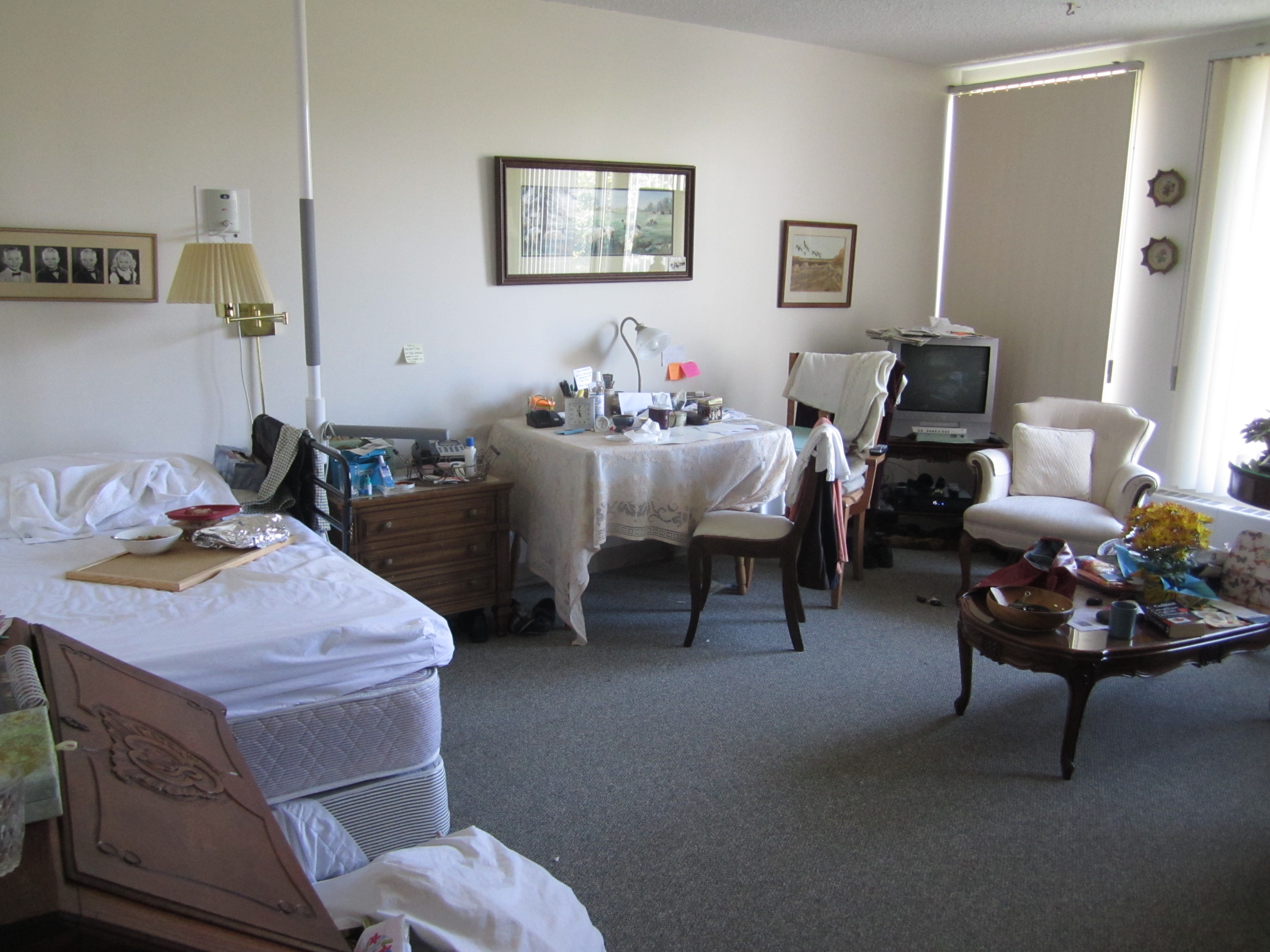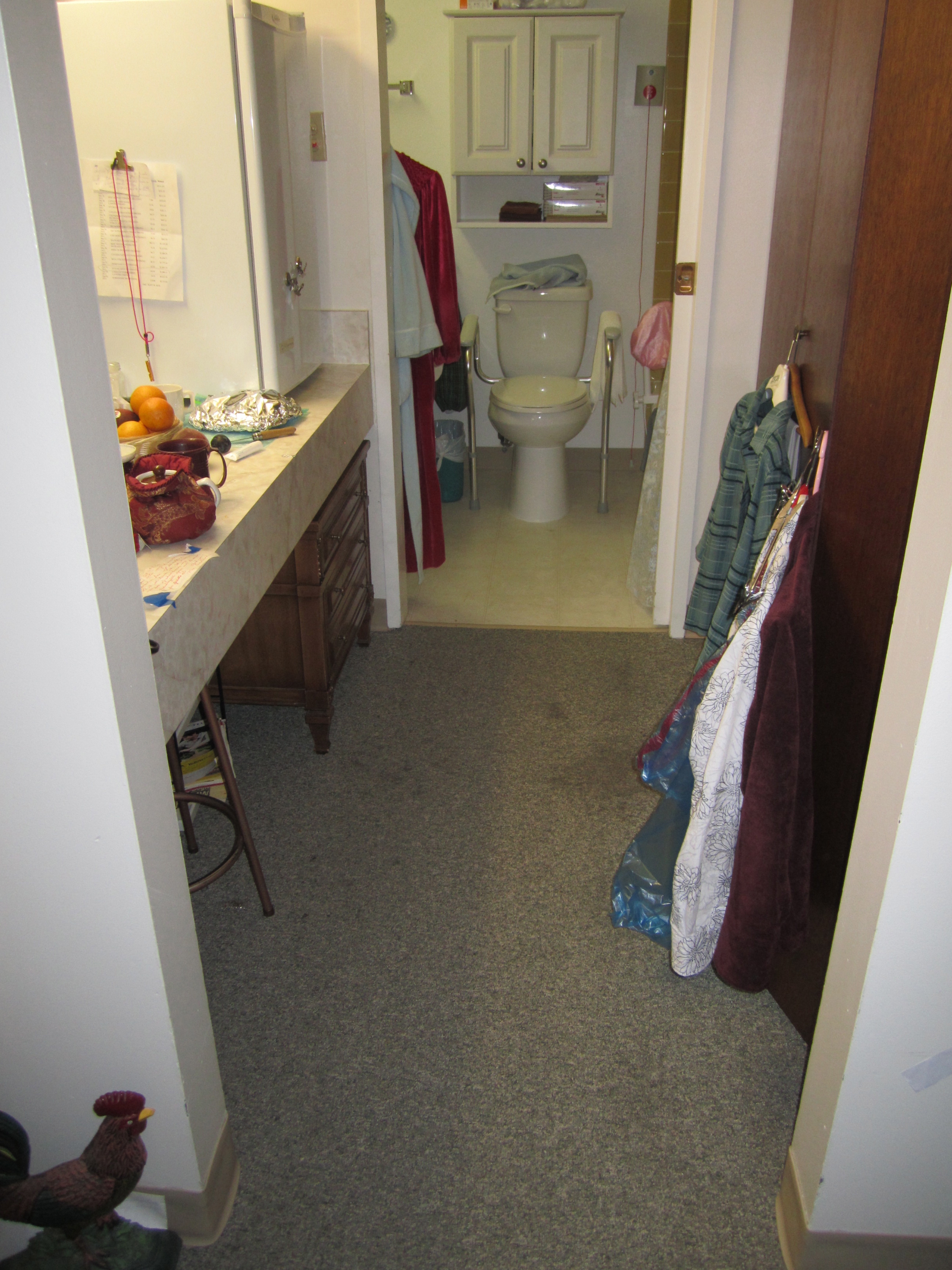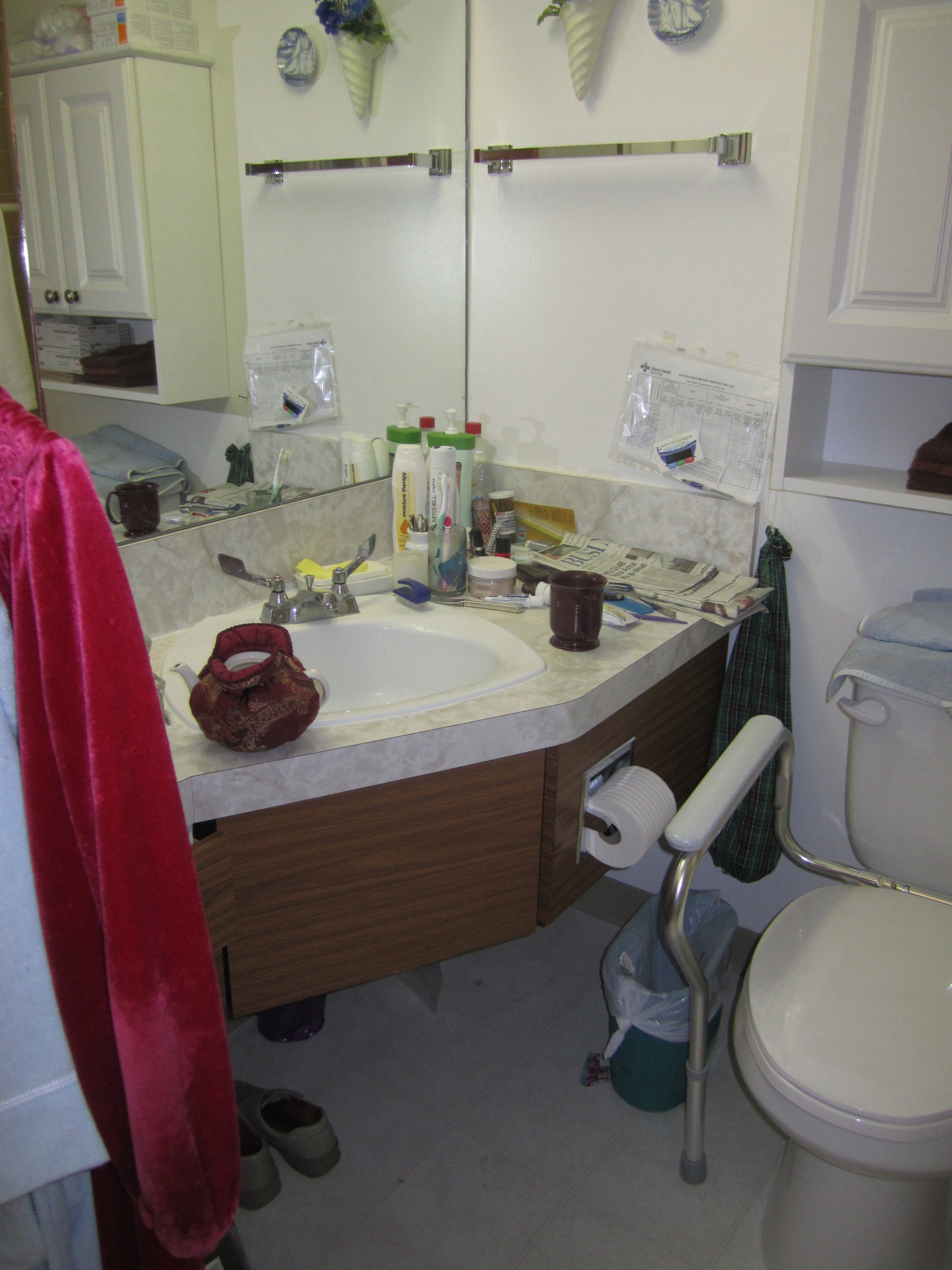The crash of the professional with the personal often informs us, makes us shake our heads and reinvigorates our passion. The importance of the intersection of the individual, the environment and the tools available cannot be understated as older folks navigate (or are herded) through housing, care and safety alternatives. (I might have said choices but that would be mis-stating the case.)
Checking in with my friend Shelley Di-Nur I heard a not atypical story worth repeating. She has written up the experience in this guest post. The issues and the passion are clear. Unfortunately recognition of the problem is not common. Solutions are not even discussed. Shelley is an occupational therapist with a long-time interest in housing and community design that is accessible, affordable and inclusive for people of all ages and abilities. She is a member, and former chair, of the St. John’s Universal Design Network, a coalition of individuals from community service groups and private industry that strives to promote and advocate for universal design in local housing building practices. She lives in St. John’s, Newfoundland, Canada.
As an OT working with individuals recovering from stroke I’m well aware of the impact design has on one’s ability to move about safely and easily, wherever they are. Recently, I experienced this from a very personal perspective – when I visited my 91 year old mother-in-law, Jacquie, in Alberta.
Until a few months ago Jacquie lived in a spacious one-bedroom apartment in the “Independent Living “ wing of a large, privately run Seniors’ complex. However, following a series of accidents (destroying 2 microwaves, catching her housecoat on fire …) she reluctantly agreed to move to a small studio apartment in their “Assisted Living†wing.
Unfortunately, while moving to Assisted Living has provided her a modest increase in help (though nearly every service is billed ‘a la carte’), it’s also resulted in new safety hazards she didn’t have before.
First, the comfy double bed she slept on prior to her move – and had no difficulty getting in and out of on her own –  was too large to accommodate the new space, so her daughter (visiting from Washington to help with the move) decided it best to replace with a single one (loaned from the Seniors’ complex). Noticing the new bed had a rather hard mattress, her daughter also decided to add a soft 2†foam topper to it, and then shortly afterwards left  (returning home) – not realizing the difficulty this new bed would create for her mom.
Almost immediately Jacquie started complaining about the bed – bitterly. She couldn’t say why, only that she hated it and wanted her old bed back. So it was only when my husband arrived for a visit some months later and stayed with her that we finally understood why she hated it so much.
During the night he was wakened 3 times to hear her calling out “Jack! Help!†and each time for the same reason: she’d fallen out of bed.  Why? Because the bed was too high and she was too weak to push herself in properly, she’d perch herself on the edge of the bed instead – just enough to lie down on the lower half. Then as the night progressed, her shifting, sleeping body – aided by the mattress topper sliding over the one below it – went over the edge and she’d wake up on the carpet – no knowing how she got there, only that it kept happening again and again and again.
 see the mattress topper, slipping on the bed
see the mattress topper, slipping on the bed
Second, Jacquie’s new bathroom is too small to bring her 4-wheeled walker inside. As she depends on her walker to go anywhere, and the corridor leading to the bathroom is too narrow to turn around in, her solution is to turn around before she enters the corridor and then walk backward until she reaches the doorway. Far from ideal, not to mention infuriating – the design could be SO much better. What were they thinking?
To cap it all off – when we brought our concerns to management and asked if it would be possible for their staff to check on Jacquie more frequently, as well as help her into bed until a more suitable bed could be arranged, we were told that – because the facility is classified as an “Assisted Living†vs. a “Designated Assisted Living†(http://www.albertahealthservices.ca/627.asp a distinction in Alberta) facility, they don’t provide this service; also, they aren’t required to have a mechanical lift on site. So if Jacquie falls and can’t get herself up again, family or an ambulance will be called.
Bottom line: thanks to bad design my mother-in-law faces greater risks for falling than she had before she moved. And given the service limitations provided, it also means she could be facing yet another move again very soon.


 Louis Tenenbaum, one of the nation's leading authorities on aging in place, is the founder of HomesRenewed, a coalition of business, consumers and nonprofits, driving policy and investment to increase the number of age-friendly homes.
Louis Tenenbaum, one of the nation's leading authorities on aging in place, is the founder of HomesRenewed, a coalition of business, consumers and nonprofits, driving policy and investment to increase the number of age-friendly homes.
{ 4 comments… read them below or add one }
Disgusting, and yet all too common the lists of stories about “bare minimum” careless caregiving in the facility setting…
Thank you for sharing publicly – it’s necessary!!
Really appreciate this story. I too have served clients in “independent” living facilities where assistance is always a 911 phone call away. When will they admit that independent living does not really exist. It is assisted living in that essntially every resident is getting some form of assistance (cleaning, meals etc.). Having someone on staff with the appropriate tools (i.e. lifts) is the minimum that should be available. I have heard patients waiting up to over an hour to get back on their feet. Really? For what they pay at these facilities, they should be obligated to have an attendant on staff to assist those in need.
Thanks for your post.
Awesome article.
I know from having my mother in an assisted living facility for a long time that these issues happen quite often. In theory it is a great idea to have the constant care for our loved one’s but sometimes the perfect care isn’t established in these facilities, and the standard of living for our elderly family members can go to the wayside. Thanks so much for sharing!